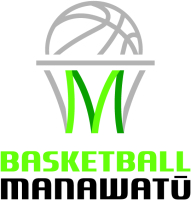Basketball New Zealand Community Update
 Buller BasketballDevelopment Position BBNZ would like to congratulate the Buller Basketball Association on thinking outside the square and developing a new initiative in their area. Recently Buller Basketball has combined with the local Cricket and Volleyball Associations to secure funding for a full year, full time Development Officer position. The three codes share the role with each sport using the development officer during the peak time of their sport. Basketball has the use of this position for the best part of the winter months. This initiative shows that there are other ways to approach problems such as a lack of resources; financial or physical. The three codes involved acknowledge that it was unlikely in a small community that they would each be able to fund and support individual roles within their sports. This approach has allowed all three codes the opportunity to access a resource and support the development of their sport in Westport and local environs. Well done, Buller Basketball!! Outdoor CourtsParklife Ltd ParkLife Ltd is a company that creates active spaces to keep communities fit and social. One of the founders is Sally Farmer, former Tall Fern and Olympic Basketball player. With a love of the game, Sally and her team have worked with Local Government to put in new and refurbished basketball courts in public spaces. Here is one of ParkLife’s latest projects in Auckland that followed the most cost effective method of creating a great facility – upgrade an existing dilapidated court. /// Gribblehurst Basketball Half Court_Interview /// Gribblehurst Basketball Half Court_Highlight Reel For this project, ParkLife were approached by Auckland Council to design and carry out the work to refurbish the court. Funding was allocated by the Albert-Eden Community Board and works were completed early this year. These courts are used for fun pick-up games but also for legitimate training. Check out the training in action at another ParkLife project in Auckland, Potters Park: /// Potters Park_Puni Interview Sally describes ParkLife as a company that interfaces between users, sport organisations and the Council to successfully deliver projects. Here is her advice on how to advocate for more courts in public space in your area:
Feel free to contact ParkLife if you would like more information. 
 Let Them Play BannersProduction Options  Basketball New Zealand had been able to secure an offer from a local Wellington signage company to produce the BBNZ ‘Let Them Play' banners. The offer is as below: Pull Up Banners
Options:
If Associations need a quote for funding purposes, Marija Vidovich, marija@nz.basketball can provide one on request. An example of a personalised banner, in this case, Marlborough Basketball, can be seen on the left. If you are interested in the pull-up banners or any other formats fro displaying this pormotion please contact Marija. Accommodation in NelsonAn exciting announcement from Nelson College if you are thinking of taking a trip to sunny Nelson. One of their boarding hostels is about to reopen at the end of this month and will be available all year round for hire. Fell House can accommodate up to 100 guests! And they have a dining room on site who can cater for all your meals. Imagine not having to worry about preparing and cooking meals for your group! Comfortable accommodation offers full bedding, towels, wi-fi, laundry facilities, games room, SKY TV, and Fell House is situated only a 10 minute walk from the CBD or a 10 minute drive from Nelson Airport and Saxton Sports Grounds. Other facilities include assembly hall, gymnasiums, swimming pool, and fields. For all enquiries please contact Sharon Dawson on sd@nelsoncollege.school.nz BBNZ Community TeamIf there is anything you wish to discuss please don’t hesitate to contact the appropriate staff member: Matthew Ruscoe: for association support & advocacy - matthew@nz.basketball Daniel Dawick: for database, technology services, partner tools & resources - daniel@nz.basketball Natu Taufale: for coach education & development - natu@nz.basketball Melony Wealleans: for referee education & development and tournament officials - referees@nz.basketball Brad Edwards: for community strategy, national partners & community advisory group - brad@nz.basketball |











Comments
Comment Guidelines: The SportsTG Network is made up of players, families and passionate sports followers like you who have a strong opinion about sport. That's great - we want you to have your say and share your thoughts with the world. However, we have a few rules that you must follow to keep it fun for all. Please don't be rude, abusive, swear or vilify others. Apart from some pretty serious sport sanctions, we also can ban you and report you if things get out of hand. So play fair and have fun, and thanks for your contribution.